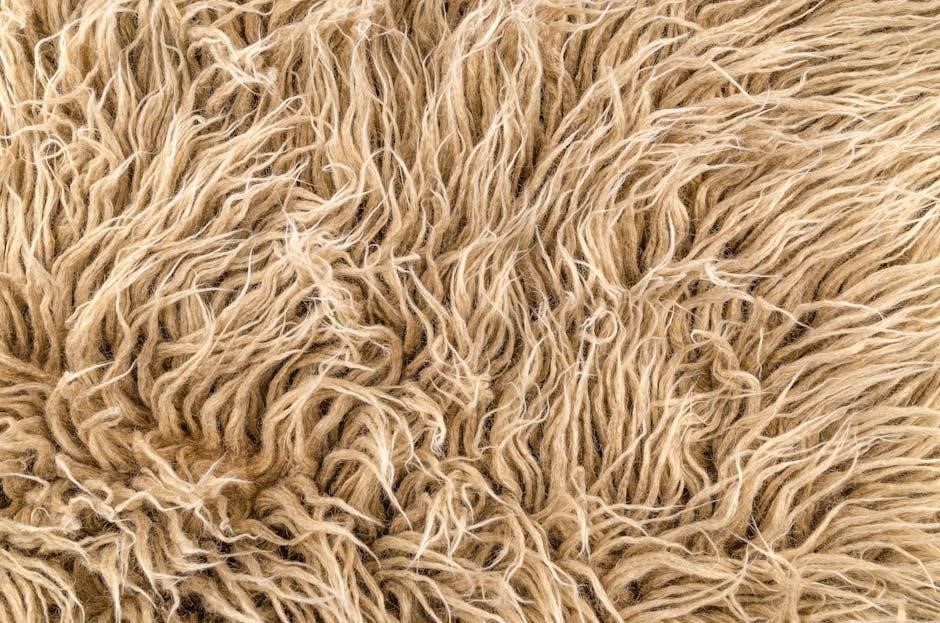Pipe Thread Dimensions PDF: An Overview
Pipe threads are essential in plumbing and fluid flow systems. A comprehensive PDF overview can clarify thread types, measurements, and standards. Understanding these elements aids in proper identification and application within various industrial contexts.

Understanding Pipe Threads
Pipe threads create sealed connections for fluid and gas transport. Knowing their characteristics is crucial for proper installation and maintenance. Dimensions, types, and standards contribute to reliable, leak-proof systems across diverse applications and industries.
Definition and Applications of Pipe Threads
Pipe threads are a standardized method of creating sealed joints in pipes and fittings, crucial for fluid or gas transfer. These threads, whether tapered or straight, ensure a tight seal through mechanical interference or sealant application. Common applications span plumbing, hydraulics, pneumatics, and the oil and gas industry.
Their reliable connections facilitate the safe and efficient transport of various substances. Different thread types, like NPT or BSPP, are selected based on pressure, material compatibility, and international standards. Proper thread identification and sealing techniques are essential for preventing leaks and ensuring system integrity across diverse operational environments.
Importance of Correct Pipe Thread Identification
Accurate pipe thread identification is vital for ensuring leak-proof and secure connections in fluid and gas systems. Mismatched thread types, such as using NPT with BSPP, can lead to improper sealing and potential system failures. Correct identification prevents cross-threading, which damages threads and compromises joint strength.
Knowing the thread type allows for the selection of appropriate sealants and assembly techniques, optimizing joint performance. Accurate identification also streamlines maintenance and replacement processes, reducing downtime and costs. Compliance with industry standards and safety regulations depends on precise thread identification, safeguarding operational integrity and preventing hazardous leaks.

Types of Pipe Threads
Different pipe thread types exist, including NPT, BSPP, and BSPT. These threads vary in their design, dimensions, and applications. Understanding their specific characteristics is crucial for proper connection and sealing.
National Pipe Tapered (NPT) Threads
NPT, or National Pipe Tapered, threads are a common American standard for tapered pipe threads. They are defined by a 1.7899-degree taper angle and a 60-degree thread angle. The taper rate for all NPT threads is 1 in 16, measured by the change of diameter over the thread’s distance.
NPT threads are often used in various applications. Note that the pipe sizes do not refer to any physical dimensions. The outside diameter of a pipe or fitting must be measured and compared to a table for size determination. NPT threads are crucial for maintaining and installing equipment.
British Standard Pipe (BSP) Threads: BSPP and BSPT
British Standard Pipe (BSP) threads are widely adopted in many countries, also known simply as BSP. There are two main types: BSPP (British Standard Pipe Parallel) and BSPT (British Standard Pipe Tapered). Several parameters can be observed in a standard BSPP thread.
It is important to note the differences. These threads are essential in ensuring proper connections in fluid and pneumatic systems. Understanding their specifications is crucial for selecting the correct components and achieving leak-proof seals. These threads are often used in the construction of industrial components.
Other Thread Types: NPTF, NPSM, and More
Beyond NPT and BSP threads, several other specialized types exist. NPTF (National Pipe Tapered Fuel) threads are designed for fuel and high-pressure applications, offering a dry seal without sealant. NPSM (National Pipe Straight Mechanical) threads are used for mechanical joints, requiring a sealant for leak-proof connections.
Other less common threads include NPSL, SAE, and metric threads, each tailored to specific applications. Identifying these different thread types accurately is crucial for proper installation and maintenance of equipment. Detailed specifications and charts are available to assist in determining the correct thread type for a given application.

Measuring Pipe Thread Dimensions
Accurate measurement is crucial for identifying pipe thread size and type. This section outlines essential tools and provides a step-by-step guide. Correct measurements ensure proper connections and prevent leaks in fluid systems.
Tools Required for Measuring Pipe Threads
To accurately measure pipe thread dimensions, specific tools are necessary for precise readings. A caliper, preferably digital, is essential for measuring the outside diameter of male threads and the inside diameter of female threads. A thread pitch gauge, also known as a screw pitch gauge, is used to determine the threads per inch (TPI) or the thread pitch. Pipe thread gauges can also be used for quick identification.
For tapered threads like NPT, a taper gauge can help verify the taper angle. Additionally, a ruler or measuring tape is helpful for measuring the thread length and overall fitting size. Having these tools ensures precise measurements for proper thread identification and compatibility.
Step-by-Step Guide to Measuring Thread Size
To accurately measure thread size, start by identifying whether the thread is male (external) or female (internal). For male threads, use a caliper to measure the outside diameter of the thread. For female threads, measure the inside diameter. Next, use a thread pitch gauge to determine the threads per inch (TPI) or the thread pitch.
Compare your measurements to a pipe thread size chart to identify the nominal pipe size. Note that pipe sizes do not directly correspond to physical dimensions. For tapered threads, check the taper using a taper gauge. Finally, confirm your findings by comparing multiple measurements and consulting reference materials for accurate identification.
Pipe Thread Size Charts and Tables
Comprehensive pipe thread size charts and tables are vital for accurate identification and selection. These resources provide essential dimensions, specifications, and standards for various thread types, ensuring proper connections in plumbing and industrial applications.
NPT Thread Size Chart: Dimensions and Specifications
The National Pipe Tapered (NPT) thread size chart provides detailed dimensions and specifications crucial for various applications. Referencing the ANSI B 1.20.1 standard, the chart includes data for both external and internal pipe threads. Key parameters such as thread diameter, threads per inch, and taper rate are specified to ensure compatibility and leak-proof seals.
The taper rate for all NPT threads is 1/16, measured by the change in diameter over the thread distance. This chart aids in proper identification, selection, and installation within plumbing and industrial systems. Understanding these specifications helps prevent connection issues.
BSP Thread Size Chart: Dimensions and Specifications
The British Standard Pipe (BSP) thread size chart details crucial dimensions and specifications for both BSPP (parallel) and BSPT (tapered) threads. This chart helps in identifying the correct thread size, ensuring proper fit and sealing in various applications. Key dimensions include thread diameter, pitch, and thread angle, following established international standards.
The BSP thread is widely used in many countries, often referred to as a British Standard Pipe thread. The specifications in the chart guarantee compatibility and prevent leaks, by providing data for effective thread length and truncation values as well.

Common Issues and Solutions
Addressing common issues in pipe threads involves troubleshooting leaks and selecting appropriate sealants. Matching thread types and applying correct torque are crucial for preventing failures. Utilizing the right techniques ensures reliable connections.
Troubleshooting Leaks in Threaded Connections
Leaks in threaded pipe connections can stem from various factors, including mismatched thread types or insufficient sealing. Identifying the correct pipe thread is crucial, as nominal sizes don’t always match standard measurements. Start by inspecting threads for damage or debris that may compromise the seal. Ensure proper alignment and avoid cross-threading during assembly.
Applying the correct torque is vital, but standard specifications may vary based on materials and sealant. Consider using thread sealants or tapes specifically designed for pipe threads to enhance sealing. If leaks persist, re-evaluate the thread compatibility and consider replacing damaged components. Remember, proper installation prevents future issues.
Selecting the Right Sealant or Tape for Pipe Threads
Choosing the appropriate sealant or tape for pipe threads is crucial for leak-proof connections. Consider the application, material compatibility, and temperature range before selecting a product. PTFE (Teflon) tape is a common choice for general-purpose sealing, offering resistance to many chemicals.
For more demanding applications, pipe dopes or thread sealants provide enhanced sealing capabilities. Ensure the sealant is compatible with the fluid or gas being conveyed. Apply sealant evenly to the male threads, following manufacturer instructions. Avoid over-application, which can compromise the joint. Proper selection and application of sealant or tape are essential for reliable pipe thread connections.
